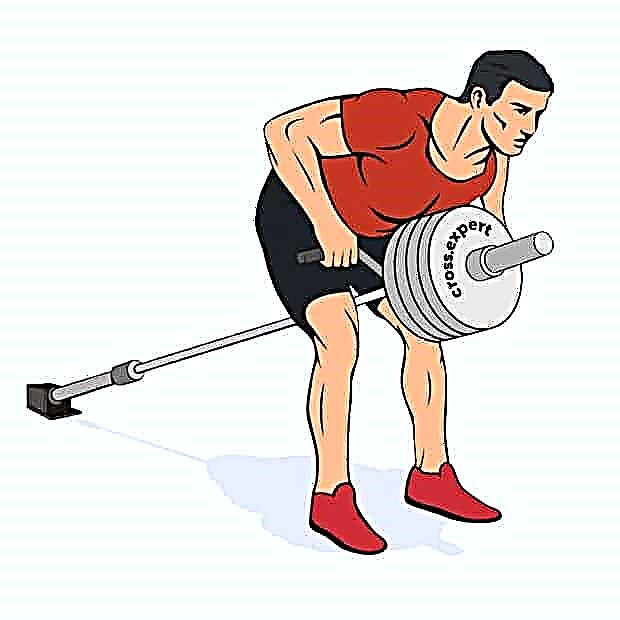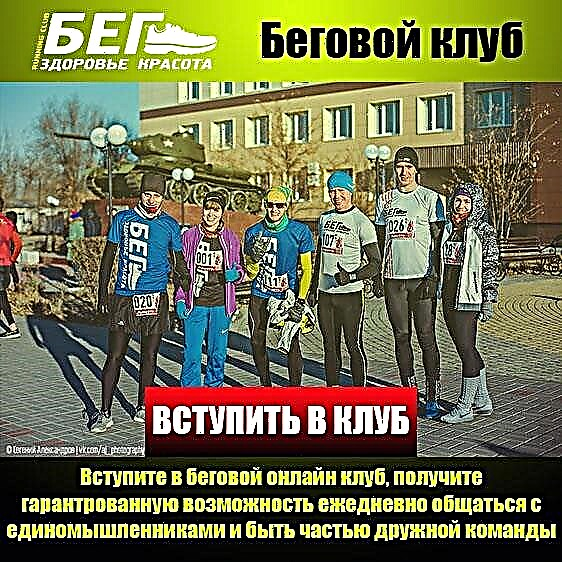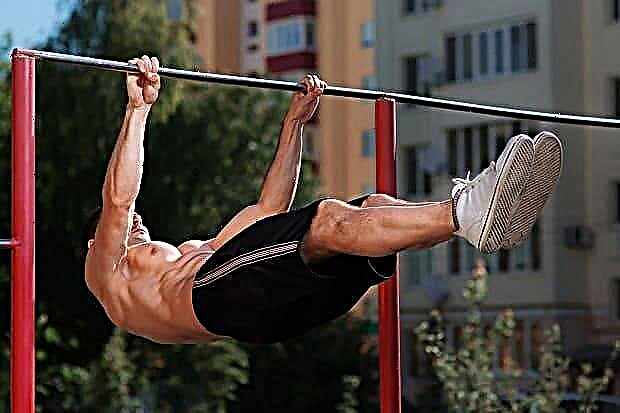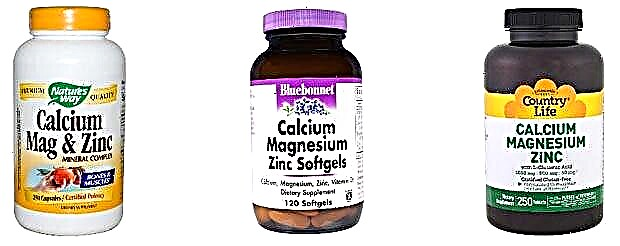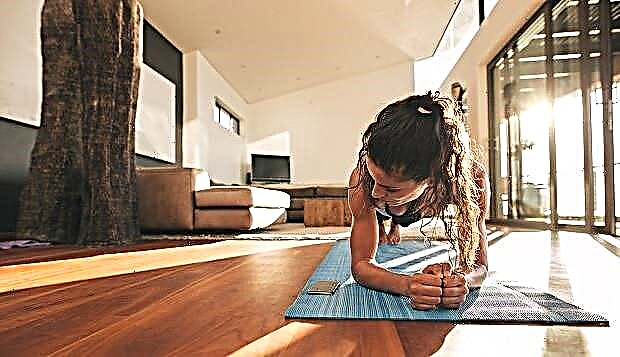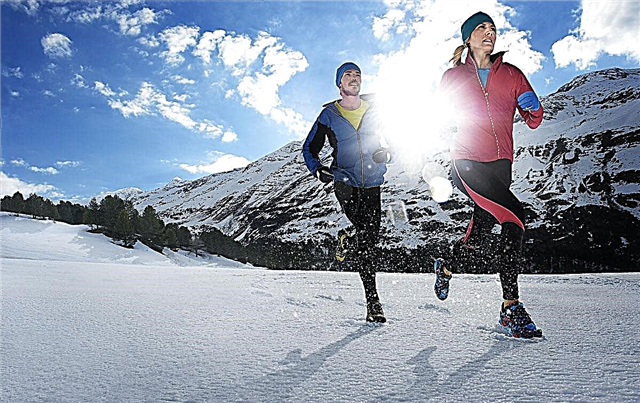If you dream of taking part in a marathon, but still doubt whether you can one day become a champion in running, then today we will tell you about simple steps to victory and accessories that will make running much more comfortable.

Elena Kalashnikova, a candidate for master of sports, shares her practical experience, behind whom there is more than one marathon.
 - My name is Lena Kalashnikova, I am 31 years old. I started running 5 years ago, before that I was engaged in dancing. At that time, the running boom began in Moscow and I also started to run. I met different runners, then there were not so many famous ones. One of them was blogger Alisher Yukupov, and he told me then: "Let's run a marathon."
- My name is Lena Kalashnikova, I am 31 years old. I started running 5 years ago, before that I was engaged in dancing. At that time, the running boom began in Moscow and I also started to run. I met different runners, then there were not so many famous ones. One of them was blogger Alisher Yukupov, and he told me then: "Let's run a marathon."
I got ready, ran the first marathon in Istanbul and after that I was completely addicted, I found myself a coach, began to train and after a year I completed the CCM in the marathon. Now my goal is to become a master of sports. Of my achievements - I took third place at the Moscow night race this year, fourth - at the Luzhniki half marathon, a participant in the Russian marathon championship in Kazan this year, a prize-winner of some other Moscow races.

- What inspires people to start training for marfons?
- Someone is inspired by the stories of outstanding athletes, someone just got the idea to run a marathon. But most of all, the stories are inspiring when a person abruptly changed his life, for example, instead of partying, he began to play sports professionally. It seems to me that these stories are inspiring. And, of course, photos of sports life from Instagram are also motivating.

- Please tell us, based on your experience, what practical tools and techniques help in preparing for the marathon?
- Preparation for a marathon is a whole complex of measures, that is, it is not only training, it is, of course, also recovery. The trainer creates the program. In the basic period, these are some workouts, closer to the marathon - others. I constantly do massage, at least once a week, visit the sports recovery center. My most favorite procedures are cryopressotherapy, these are pants in which the water is cold, only 4 degrees, you lie down on the couch, put on these pants and for 40 minutes they inflate, press and cool your legs. This helps flush out lactic acid and reduce inflammation.
Health is the most important tool for any athlete, so health must be monitored. In addition, for recovery, it is important to get enough sleep, eat well, and take vitamins. For example, in my medicine cabinet there is Riboxin, Panangin, vitamin C, multivitamins. Sometimes I take iron for hemoglobin.
Good equipment is very important and must be changed in time. Sneakers will last their 500 km - and they should be thrown away, not sparing them at all, because your legs are more expensive. There are a lot of sneakers, they are different, of course, they help in the training process, like other equipment, you simply cannot do without it. And in general, I want to say that you can train, it would seem, in anything, but in fact, technological training eliminates many inconveniences.
And, of course, a very cool and important assistant is a sports watch, because you can't do without it. You can, of course, turn on your phone and run 30 km using a GPS tracker, but I can't imagine training without a watch, because it is both heart rate and distance, these are a lot of additional functions, this is all life, a lot of information that I then send to the coach so the watch is my everything.

- What practical role can high-tech gadgets, such as smart watches, play in training?
- The most important and yet the simplest functions are distance and heart rate tracking. Further - the ability to cut off segments at the stadium. I go to the stadium, do a workout, I need to run ten thousand meters, after 400 meters I rest. I cut off all the segments, they remember the information for me, then I look at it in the application, I unload all the information from there and send it to the coach so that he can watch how I ran, what segments were obtained, and in each segment - information on the pulse, frequency steps, well, this is already in more advanced models, like mine.
There are also indicators of running dynamics, which can be used to draw conclusions about running technique: they show the frequency of stride, the height of vertical oscillations, this is also an indicator of technique, how high a person jumps when he runs: the less vertical oscillation, the more efficiently he spends energy, the more it moves forward, well, and many other indicators.
Advanced watch models are able to calculate the recommended duration of rest: they track how the athlete's form changes and, based on the training, provide analysis and evaluation. The gadget records, for example, that this particular workout affected your ability to maintain a fast pace for a long time, improved your maximum oxygen consumption, your anaerobic abilities, and another workout was useless and did not give you anything. Accordingly, the watch tracks the athlete's form status - whether the form has improved or worsened.
For example, I got sick in September, respectively, I did not run for a whole week, and when I started again, the clock showed me that I was completely in a hole and everything was bad.
This is what the watch is useful for in the training process, that is, it becomes an effective tool for assessing the training and fitness of an athlete.
Again, the vital signs tracked by the smartwatch can also be used for recovery, that is, to track whether you are recovering or not. The watch can track sleep, and sleep is very important. If a person sleeps five hours a day for several days in a row, what kind of training can there be?
The watch also tracks the resting pulse, which is a good indicator of the condition of the athlete. If the pulse is higher, for example, suddenly the beats have increased so much by 10, it means that the athlete is overworked, he needs to be given rest, to take some measures to recover. The watch can track the level of stress, this can also be taken into account during the training process.

- What gadgets do you yourself use in sports?
- In sports, I have a Garmin Forerunner 945, this is a top model running watch, I use it. They have a player, they have the ability to pay by card, so I go out to some of them and don't even take my phone with me. Previously, I needed a phone to listen to music, now a watch can do it, but still, most of the time I take my phone with me, mainly in order to take a super-plan of the watch and post it on Instagram at the end of a run.
And so I just carry my phone with me, an extra load. I use a watch and Bluetooth headphones, I end up with a watch and listen to music through them, there is a phone with a treadmill app, Garmin Connect and Travel, and, accordingly, a laptop through which I fill out reports in my sports diary and send it to the coach. Well, and a phone to communicate with the coach.

- What functions of a smartwatch do you find most useful from a practical point of view specifically for running?
- It is clear that there are those that are needed, this is a GPS and a heart rate monitor, but I really like to look at the indicators of running dynamics, now I like the indicator of how many breaths I take. I just like to look at the statistics later, I am very interested, and accordingly, I watch how the IPC changes by the hour, if the IPC grows, then I am progressing. I like the analysis of the workout. For other people, each has its own set of the most important functions, some I may not even know about.
The watch is cool, but I do not use everything, and someone cannot do without something new. Once my watch helped me out, I went on a business trip to Cologne, went for a run. I am very poorly oriented on the terrain, and I was saved by the function "home", which led me to my hotel, however, I ran and at first did not recognize it, I thought that the clock had mixed something up. I ran away a little, turned on "home" again, again they brought me there and the second time I realized that yes, this is really my hotel.
This is the function. But in ordinary life in Moscow, I do not use it. Someone cannot live without maps, I just run to places that I know well. And someone without cards, for example, cannot. It all depends on the person what he needs. Now, for example, I can't live without music. When I had the previous model and I didn't have headphones, I ran without music.

- In what sporting situations is it difficult to do without a watch?
- Watches are needed on long distances, on our road races, especially for beginners. You can display the data on the screen that is convenient for the person himself. Each has its own set, as it is convenient to whom. For example, I put a stopwatch on my watch and look at it when I run past the kilometer marks. Someone knows how to unfold according to the pulse, for example, a person runs and looks at his pulse, that is, he knows in which zone he can run this distance and is oriented. If the pulse is out of bounds, then the person slows down.

- Tell us about the problem of recovery and overtraining, is it easy for an athlete to understand when it is time to stop and go “on vacation”?
- In general, overtraining is when a person skates so that he feels bad, he stops sleeping, his heart pounds all the time, this can be subjectively felt right away. Nerves, fatigue, if you cannot perform training, you lack strength, these are all signals of overtraining. Most often, especially people who come across this for the first time, they ignore it all, they do not understand what it is and what should be slowed down.
If they don't have a coach and he doesn't tell them to rest, then they will continue to train until they get sick or something else happens. And with a watch it is much easier, they just monitor the resting pulse and you can immediately see: you look into the application, it says "resting heart rate such and such." If he suddenly grew by 15 beats, then this is a signal of overtraining.

- What is V02Max, how to monitor it, is this indicator important for a runner and why?
- VO2Max is a measure of the maximum oxygen consumption. For us runners, this is very important because it depends on how fast we can run. VO2Max shows the level of the athlete in the watch, calculates it according to training and shows, if he grows, then everything is fine, the athlete is on the right track, his form is getting stronger.
Again, according to the VO2 max, the watch can still predict the time at distances, for how much a person can complete a marathon in their current form. Again, this is sometimes motivating. If the clock tells you that you can run a marathon of three, perhaps you can, try, it can work. This is an important psychological point.
There are several factors that affect endurance running performance, these are running economy, anaerobic threshold, and VO2Max (or VO2 max, in Russian). Any of them can be influenced by training, but it is the VO2max that is easiest to calculate without resorting to clinical tests - but from the results of competitions, for example.
I look at VO2Max as one of the fitness markers. The higher this indicator, the better the physical condition of the athlete, the faster he runs. And if your program is more tailored for a marathon, then you will run it even better.
What's so great about calculating VO2Max in hours? Firstly, by the fact that he constantly monitors this indicator and recalculates it based on training. You don't have to wait for the next race to evaluate your form - here you are, new data for the new workout. In addition, it is not always possible to give all the best at a competition, which means that the calculation for it may not be very accurate.
Secondly, based on VO2Max, Garmin immediately gives a forecast of the result for runners' favorite distances - 5, 10, 21 and 42 km. This is deposited in the brain, a person begins to understand that previously unattainable numbers are now very close.
This indicator is convenient to use to assess the dynamics. That is, if it gradually rises from week to week, from month to month, then you are on the right track, your form is improving. But if it hangs on one point for a long time or, even worse, starts to fall, it means that you are doing something wrong.



